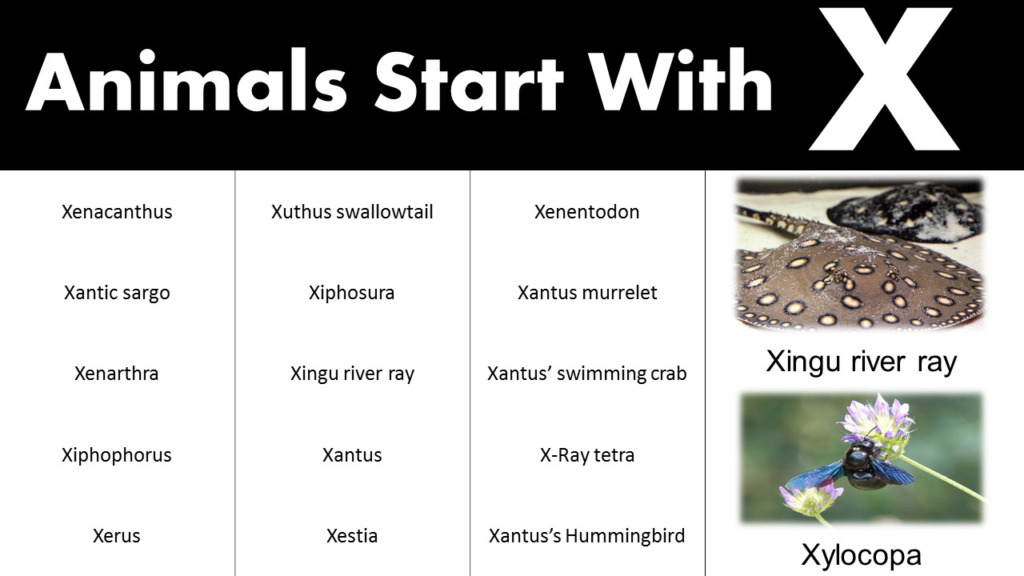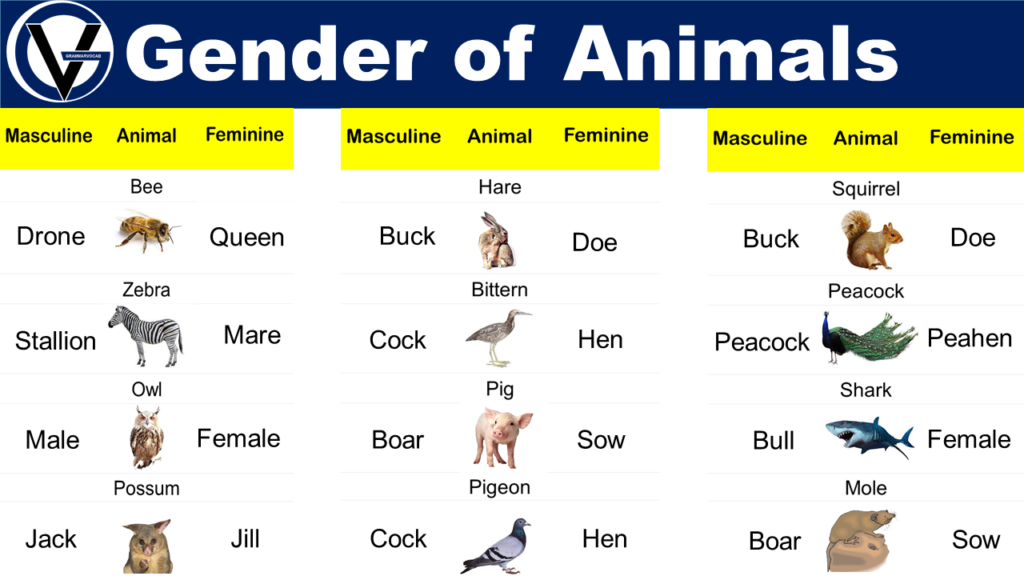When it comes to finding animals that start with the letter “X,” many people might think it’s impossible. However, there are actually several amazing animals that begin with this unique letter, and they are worth exploring. From exotic creatures found in far-off lands to familiar animals that you may see in your backyard, these creatures offer a fascinating glimpse into the diversity of the animal kingdom. In this blog post, we will take a closer look at some of the most interesting animals that start with X and learn more about their unique characteristics, habitats, and behaviors. So let’s dive in and discover the world of animals that begin with the letter “X”!
Animals That Start With Letter “X”
Xenacanthus: Xenacanthus is an extinct genus of freshwater sharks that lived during the Carboniferous and Permian periods. These sharks had a distinctive spine located on their dorsal fin, which is thought to have been used for defense against predators. They also had a unique jaw structure that allowed them to feed on a variety of prey, including fish and crustaceans. Xenacanthus fossils have been found all over the world, including in Europe, Asia, and North America.
Xantic Sargo: The Xantic sargo, also known as the Sargo mulatto, is a species of fish found in the Atlantic Ocean. These fish are typically found in shallow waters and can be identified by their silver-gray color and black vertical stripes. They are omnivores and feed on a variety of small invertebrates and plant matter. Xantic sargos are commercially important and are commonly caught by fishermen.
Xenarthra: Xenarthra is a diverse group of mammals found in Central and South America. This group includes armadillos, anteaters, and sloths. These animals are characterized by their unique skeletal features, including extra articulations in their spine and a lack of front teeth. Xenarthrans are adapted to a variety of habitats, from rainforests to grasslands, and have a range of feeding strategies, from insectivorous to herbivorous.
Xiphophorus: Xiphophorus is a genus of freshwater fish native to Central America. These fish are known for their distinctive sword-like tails, which are longer in males than in females. Xiphophorus are popular in the aquarium trade and are also used in scientific research. Some species of Xiphophorus are also known for their ability to hybridize, which has made them a model system for studying genetics and evolution.
Xerus: Xerus is a genus of African ground squirrels found in savannah and desert habitats. These squirrels are known for their ability to stand on their hind legs and scan the horizon for predators. Xerus are omnivorous and feed on a variety of plant and animal matter. They are also social animals and live in large family groups.
Xuthus Swallowtail: The Xuthus swallowtail, also known as the Chinese yellow swallowtail, is a species of butterfly found in Asia. These butterflies are known for their bright yellow wings with black stripes and spots. Xuthus swallowtails feed on nectar from flowers and lay their eggs on a variety of plants, including citrus trees.
Xiphosura: Xiphosura is a subphylum of marine arthropods that includes horseshoe crabs. These animals have distinctive hard shells and a long, pointed tail spine. They are commonly found on sandy beaches and shallow waters along the Atlantic coast of North America. Horseshoe crabs are also used in biomedical research due to their unique immune system.
Xingu River Ray: The Xingu river ray is a species of freshwater ray found in the Xingu River in Brazil. These rays have a unique color pattern of black and white spots on a brown background. They are bottom-dwellers and feed on a variety of small fish and invertebrates. Xingu river rays are also important to indigenous communities along the Xingu River, who use them for food and cultural purposes.
Xantus: Xantus is not a biological classification or organism, but rather a name that may refer to several species, including the Xantus murrelet, Xantus’s swimming crab, and Xantus’s hummingbird.
Xestia: Xestia is a genus of moths in the family Noctuidae. These moths are found in temperate regions of the Northern Hemisphere, and some species are considered agricultural pests.
Xenentodon: Xenentodon is a genus of fish in the family Belonidae, also known as the needlefish family. These fish are found in coastal waters of the western Atlantic Ocean and the Caribbean Sea. They are known for their long, slender bodies and sharp beaks.
Xantus murrelet: The Xantus murrelet is a small seabird that is found along the Pacific coast of North America, from Alaska to Baja California. It is named after the Hungarian naturalist John Xantus, who first described the species. Xantus murrelets breed on islands and rocky outcroppings, and feed on small fish and invertebrates in nearshore waters.
Xantus’ swimming crab: Xantus’ swimming crab, also known as the red rock crab, is a species of crab found in the eastern Pacific Ocean, from Alaska to Baja California. It is named after John Xantus, who collected the first specimens of the species. These crabs are commonly found in rocky intertidal zones, and feed on a variety of small marine animals.
X-Ray tetra: The X-Ray tetra, also known as the water goldfinch, is a small freshwater fish that is native to South America. It is named for its transparent body, which allows its internal organs to be seen. X-Ray tetras are popular aquarium fish due to their striking appearance and peaceful nature.
Xantus’s Hummingbird: Xantus’s hummingbird is a species of hummingbird that is found in Baja California and the Gulf of California in Mexico. It is named after John Xantus, who collected the first specimens of the species. These hummingbirds feed on nectar from flowers and also eat small insects.
Xyrichtys: Xyrichtys is a genus of wrasses that are commonly known as razorfishes. They are found in the western Atlantic Ocean, ranging from Massachusetts in the United States to Brazil. Razorfishes are characterized by their slender, elongated bodies and sharp teeth, which they use to feed on small fish, crustaceans, and mollusks. They typically inhabit rocky or coral reefs, and are known for their bold, aggressive behavior. Razorfishes are also popular gamefish and are sought after by recreational anglers.
Xoloitzcuintli: The Xoloitzcuintli, also known as the Mexican hairless dog, is a breed of dog that is native to Mexico. They are characterized by their hairlessness, although some Xoloitzcuintlis may have a short, smooth coat. They are typically medium-sized dogs, with a lean, muscular body and a wedge-shaped head. Xoloitzcuintlis are known for their loyalty and affectionate nature towards their owners, and they are also valued for their hunting skills. They are intelligent dogs that require regular exercise and socialization.
Xanthichthys: Xanthichthys is a genus of triggerfish that are found in tropical and subtropical waters around the world. They are characterized by their brightly colored bodies, which are often adorned with bold patterns and markings. Triggerfish are known for their aggressive behavior, and Xanthichthys species are no exception. They feed on a variety of prey, including crustaceans, mollusks, and small fish. They typically inhabit rocky or coral reefs, and are often encountered by scuba divers and snorkelers.
Xenops: Xenops is a genus of small passerine birds found in Central and South America. They are characterized by their distinctive long, downward-curved bills, which they use to probe for insects and spiders in the bark of trees. Xenops are typically brown or grayish in color, with streaked or mottled plumage that provides camouflage in their arboreal habitat. They are solitary birds that are often seen creeping along branches and trunks, and they have a distinctive habit of hopping headfirst down trees.
Xenopoecilus: Xenopoecilus is a genus of small freshwater fish found in South America. They are members of the family Poeciliidae, which includes popular aquarium fish like guppies and mollies. Xenopoecilus species are known for their vibrant colors and complex patterns, which vary widely between individuals and even between sexes. They are typically found in shallow, slow-moving streams and ponds, where they feed on small aquatic invertebrates.
Xolmis: Xolmis is a genus of passerine birds found in South America. They are members of the tyrant flycatcher family, which includes many species of small insect-eating birds. Xolmis species are typically brown or grayish in color, with distinctive crests or tufts of feathers on their heads. They are often found in open habitats like grasslands and savannas, where they perch on tall vegetation and hawk for insects in flight.
Xantis: Xantis is a genus of spiders found in the Americas. They are known for their distinctive flattened bodies and long, spindly legs, which allow them to move quickly and easily through the dense vegetation where they live. Xantis spiders are typically brown or grayish in color, with mottled or striped markings that provide camouflage. They are ambush predators that wait for insects to come within striking distance, and they are capable of running rapidly across the ground or up trees to catch their prey.
Xylocopa: Xylocopa is a genus of large, robust bees known as carpenter bees. They are found in many parts of the world, including North America, South America, Africa, and Australia. Xylocopa bees are characterized by their shiny, black or metallic blue-green bodies, which are covered in dense, fuzzy hair. They are important pollinators of many plants, particularly those with large, tubular flowers that are inaccessible to other bees. Xylocopa bees are called “carpenter bees” because they excavate nests in wood, often causing damage to wooden structures if they nest in human-made objects. However, they are generally considered beneficial insects because of their important role as pollinators.
Must Learn: Animals That Start With Y



